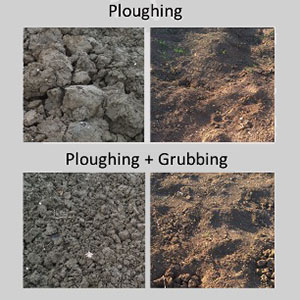Soil refinement accelerates in-field degradation rates of soil-biodegradable mulch films

Accepted: 31 May 2022
Appendix: 260
HTML: 213
All claims expressed in this article are solely those of the authors and do not necessarily represent those of their affiliated organizations, or those of the publisher, the editors and the reviewers. Any product that may be evaluated in this article or claim that may be made by its manufacturer is not guaranteed or endorsed by the publisher.
Soil-biodegradable mulch films are a promising solution to replace conventional polyethylene-based mulch films, the use of which has led to negative environmental impacts. Soil-biodegradable mulch films are specifically designed to be incorporated into the soil at the end of the cropping cycle and are expected to be biodegraded by soil microorganisms. The biodegradability of such products must be tested under laboratory-controlled conditions following international standards, although these can fail to represent real environmental conditions where mulch films are used. The objective of this study was to evaluate the effects of soil refinement on the degradation rates of three different commercial soilbiodegradable mulch films after their incorporation into the soil. The hypotheses were that: i) soil refinement (i.e., ploughing followed by grubbing) creates more favourable conditions for film biodegradation compared to ploughing alone; and ii) different mulch films show different degradation rates. An open-field, completely randomised design was applied to test the effects of soil refinement by ploughing to 0.35 m depth without and with subsequent grubbing to 0.15 m depth twice. Three commercially available soil-biodegradable mulch films were sampled in 2020 (i.e., two Mater-bi-based, one Ecovio-based) at the end of courgette growing season (~3 months) when films were still lying above ground and were later buried at 0.2 m depth inside mesh bags. Biodegradation rates of the sampled films were assessed with the indirect indicators of film weight loss and surface area loss at ~2- month intervals over 314 days. The results showed that soil refinement significantly accelerated the degradation of the three tested mulch films by 14% and 17% according to the loss of weight and surface area indicators, respectively. One Mater-bi-based film showed higher degradation rates compared to the other two films. Future studies are needed to quantify the time needed for these different mulch films to be completely biodegraded. Such studies should follow standards for laboratory incubation and/or in-field quantification of residual polymers in the soil over time.
Highlights
- Degradation rates of three biodegradable mulch films were evaluated in the open-field.
- Soil refinement accelerates the degradation of film weight (14%) and surface (17%).
- The highest degradation rates were observed for one Mater-bi-based film.
- The fastest degradation rates were observed in spring for all the tested films.
- Weight and surface area loss indicators showed a positive relationship.
How to Cite

This work is licensed under a Creative Commons Attribution-NonCommercial 4.0 International License.
PAGEPress has chosen to apply the Creative Commons Attribution NonCommercial 4.0 International License (CC BY-NC 4.0) to all manuscripts to be published.

 https://doi.org/10.4081/ija.2022.2044
https://doi.org/10.4081/ija.2022.2044



